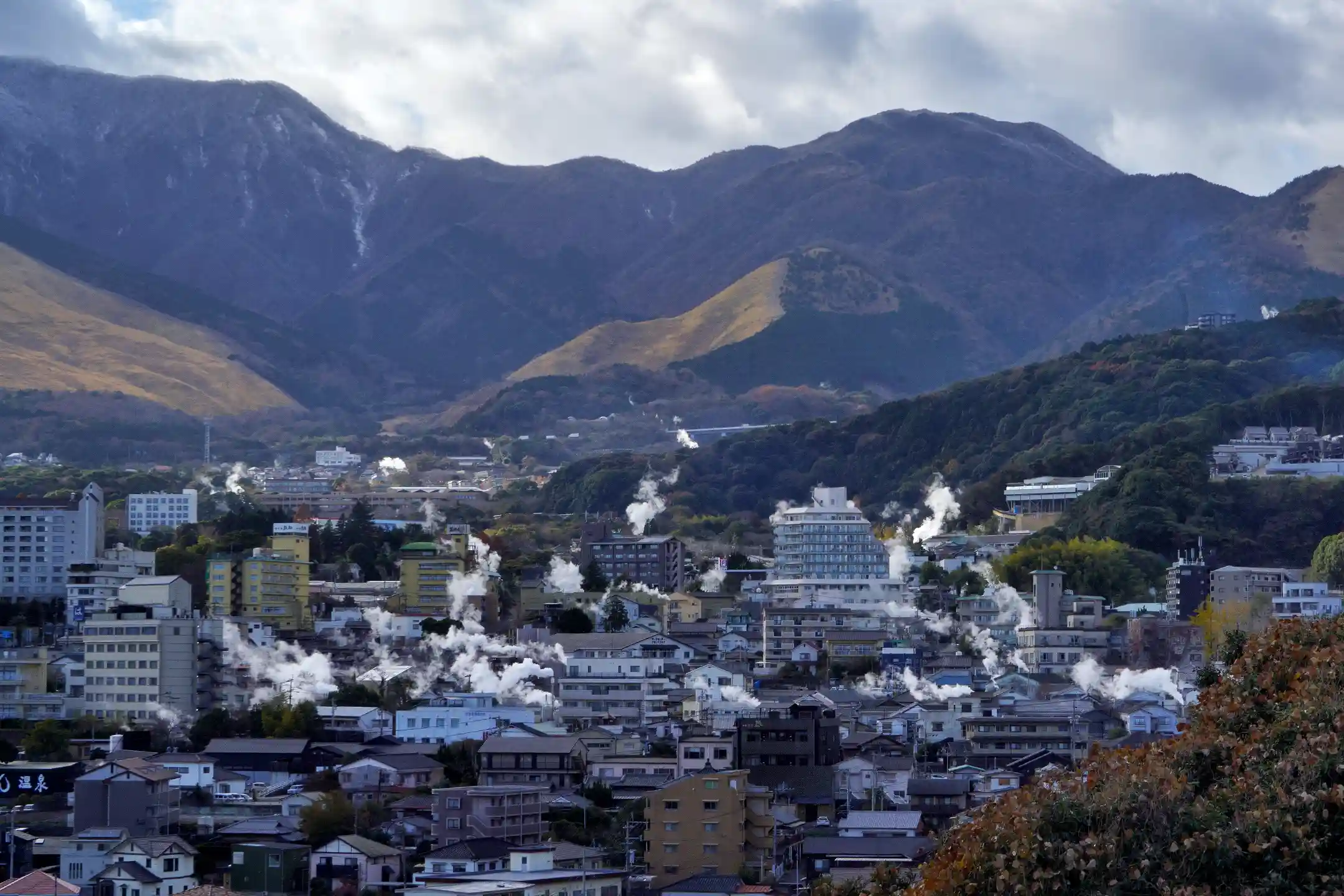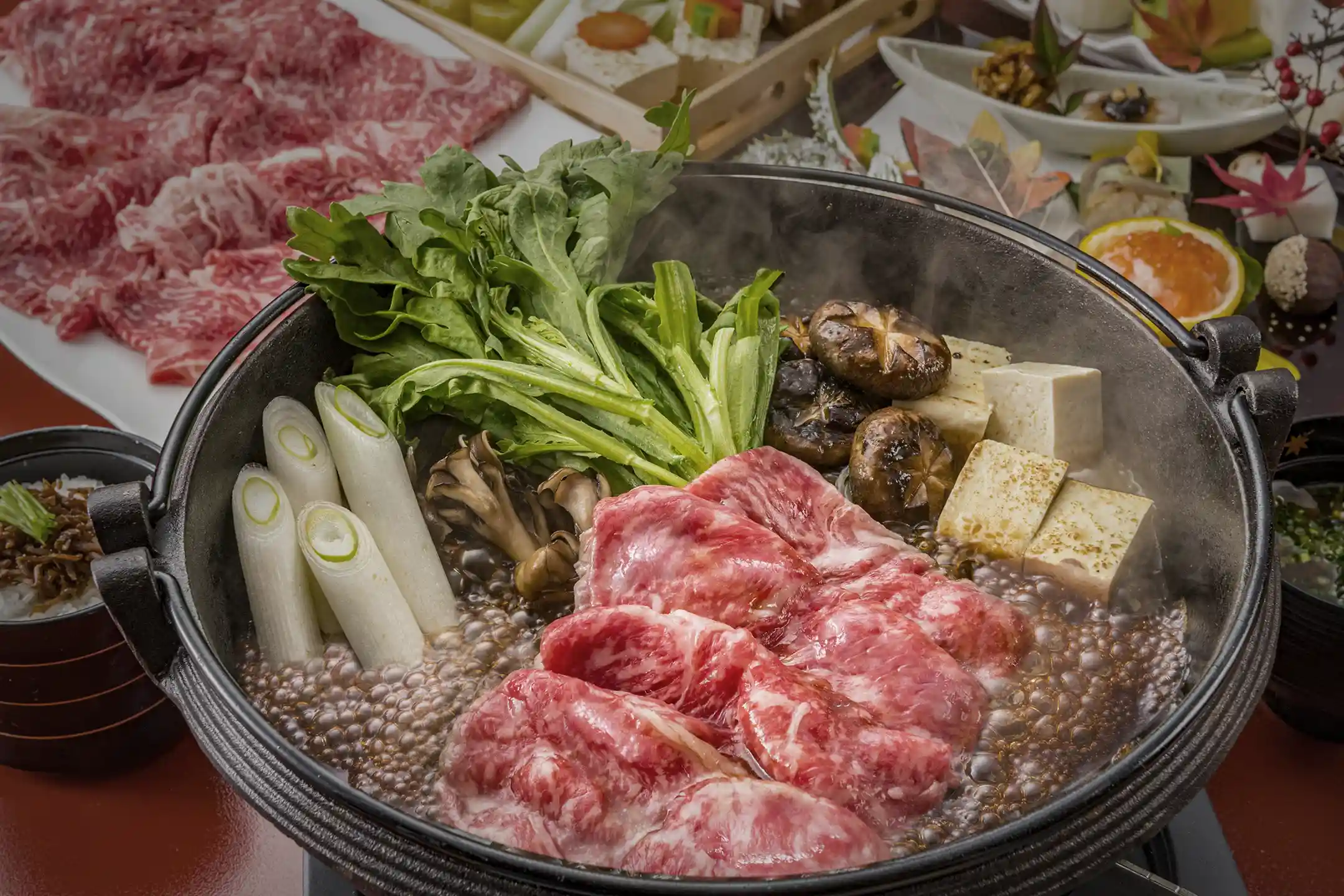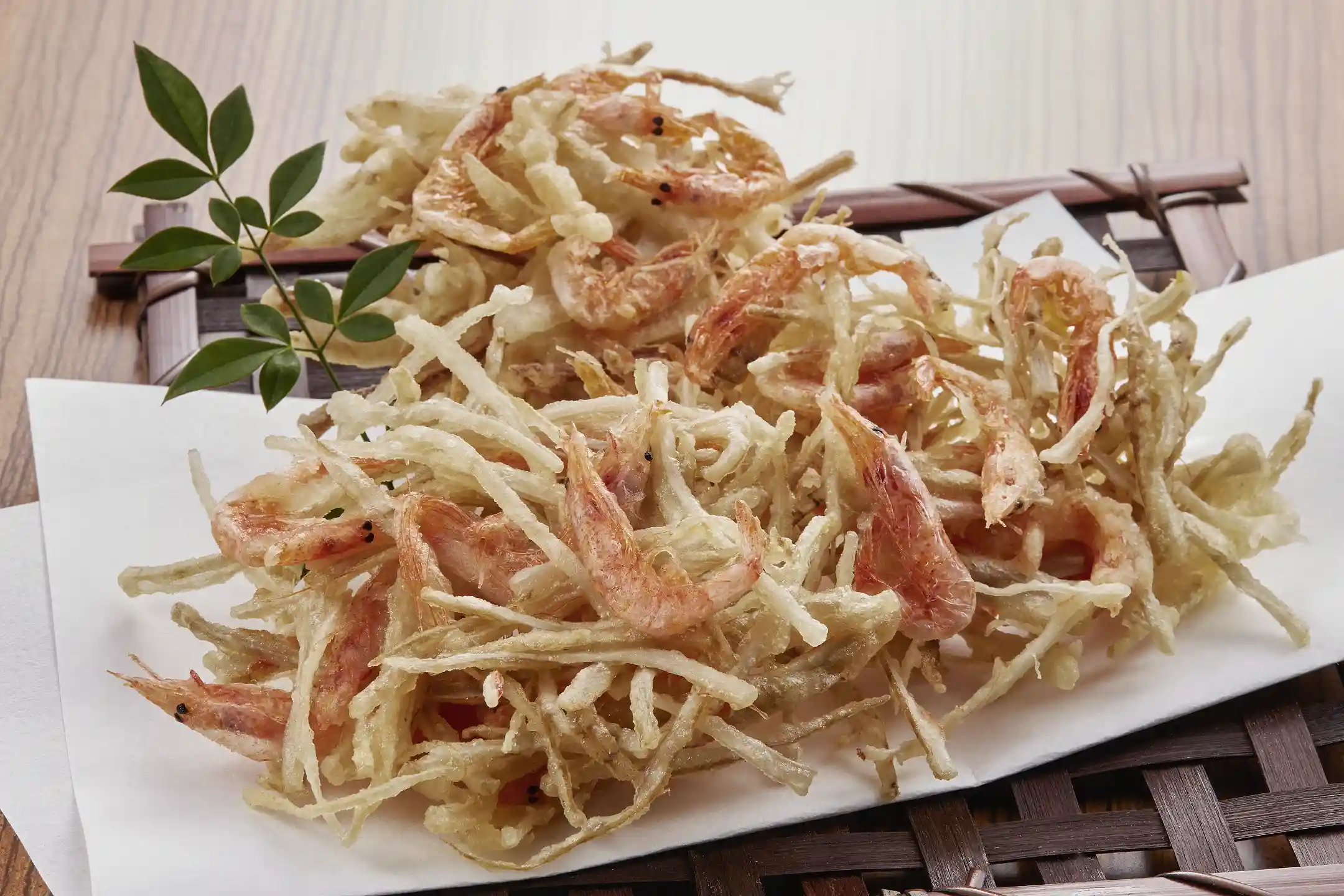Oita Prefecture’s Beppu City is famous across Japan for its hot springs, or onsen. Here, steam rises from the streets, casting a nostalgic, welcoming glow—even for first-time visitors from the West. Yet the long-standing onsen tradition might feel quite different or even puzzling if you’re used to a culture where communal baths aren’t the norm.
Rather than viewing these differences through a lens of “mystique” or “otherness,” it’s worth adopting a more open perspective, one that delves into the historical and social factors that shaped each custom. In Beppu, there’s an age-old cooking method called jigoku mushi (“hell-steaming”), which taps into the area’s natural volcanic steam. Thanks to steam heated by the earth’s energy, foods maintain their moisture while taking on a hint of mineral-rich flavor. Think of it as “eating a hot spring”—an experience that showcases how integral onsen culture is to local life here in Japan.
What Is Jigoku Mushi?
— A Unique Cooking Method Born from Onsen Culture —

Making the Most of Natural Steam
Beppu City consistently ranks among Japan’s top hot spring areas, but one neighborhood in particular—Kannawa Onsen—has preserved “jigoku mushi” since the Edo period (1). Named for its blistering steam that bubbles up from underground “hells,” jigoku mushi is a simple yet energy-saving way to cook. Unlike Western steam techniques, this method uses steam naturally seasoned by salts and minerals, giving a mild brininess to the food. It’s also a window into how locals live harmoniously with nature’s gifts.

Beppu’s hot springs produce about 90,000 liters of water every minute (2). Harnessing this energy to cook reveals how the community has capitalized on geothermal power for centuries. Placing ingredients—vegetables, eggs, meats—into a basket lowered into a jigoku-gama (“hell pot”) encloses them in this natural steam, creating dishes that are plump, flavorful, and delightfully moist.
No open flames mean it conserves energy, a fact sure to appeal to Western visitors seeking sustainable dining. Even though jigoku mushi has deep local roots, it also resonates with modern concerns about reducing one’s carbon footprint.
Preserving the Spirit of Omotenashi
 Jigoku mushi is about more than convenience: it’s part of onsen culture. Historically, hot springs in Japan served as places for bathing and communal bonding, and jigoku mushi helped bring people together for shared cooking. Even today, long-stay inns invite guests to gather around the steaming pots, chatting and making meals.
Jigoku mushi is about more than convenience: it’s part of onsen culture. Historically, hot springs in Japan served as places for bathing and communal bonding, and jigoku mushi helped bring people together for shared cooking. Even today, long-stay inns invite guests to gather around the steaming pots, chatting and making meals.
At “Jigokumushi Kobo Kannawa,” for instance, staff guide you in using the steam pots. In many Western countries, self-service might be typical, but in Japan, hands-on assistance is an expression of omotenashi (hospitality). Observing these differences can enhance your appreciation for the social customs that define Japanese courtesy.
The Appeal of Jigoku Mushi × Local Cuisine

The Perfect Temperature Range that Draws Out Flavors
What’s most exciting about jigoku mushi is how it enhances each ingredient’s essence. The onsen steam hovers around 100°C, swiftly cooking food without draining it of moisture or nutrients.
- Eggs come out moist and tender.
- Vegetables taste sweeter, and
- Meats like pork or seafood shed excess fat yet intensify in flavor.
For instance, local shiitake mushrooms—potentially an unfamiliar taste if you’re from the West—take on a surprisingly rich, almost seafood-like bite when steamed in jigoku mushi. Many first-timers are pleasantly startled at the transformation.
These natural mineral salts lightly season the food, eliminating the need for elaborate seasonings. From a cross-cultural viewpoint, it’s a great way to see how Japanese cooking values an ingredient’s own flavors, rather than masking them with heavy sauces.
Synergy with Washoku Culture
For centuries, Japanese cuisine has prized the inherent character of each element, and jigoku mushi embodies this perfectly. In Beppu, local veggies, seafood, and even desserts are sometimes steamed this way, using minimal seasoning—similar to how classic dashi-based Japanese recipes let food “speak for itself.”
Experiencing jigoku mushi also helps you understand washoku’s emphasis on subtlety. You might never have guessed simple steam-cooking could be so versatile, but it aligns naturally with how many Japanese chefs approach flavor: by spotlighting purity and nuance, rather than relying on intense spices or sauces.
Experiencing Jigoku Mushi: Recommended Spots & Programs

When visiting Beppu, tasting jigoku mushi in the haze of onsen steam is an unforgettable must-do. Places like “Jigokumushi Kobo Kannawa” allow walk-ins to rent a steam pot—though they might operate a ticket system during busy times. If you have to wait, enjoy a soothing footbath or “foot-steam,” both hallmarks of a hot spring town.
If you’re used to more private dining in the West, going shoeless at a communal steam facility might feel new, but it aligns with Japan’s blend of relaxation and cleanliness (1). A contemporary alternative is “Chinetu Kanko Labo Enma,” a relatively recent facility with a fresh café atmosphere and footbaths at some seats (3). You can steam your ingredients in style, join a bamboo-crafting or onsen-dye workshop, and connect directly with local artisans, ensuring the experience is less about “packaged tourism” and more about authentic exchange.

After indulging, be sure to explore the “Beppu Jigoku Meguri” (tour of Beppu’s “hells”). Don’t be put off by dramatic names like “Sea Hell” or “Blood Pond Hell,” which come from their vivid blue and red waters, heated to steaming extremes. Observing them up close can be mesmerizing—and if you’re curious, there are sometimes lectures by onsen experts (3). Approaching these geological wonders from both a cultural and a scientific angle can be especially insightful.
Learning About Beppu’s History & Culture: The Appeal of the Hot Spring Town
A simple walk around Beppu reveals a blend of early 20th-century wooden bathhouses and more modern cafés. For instance, “Takegawara Onsen,” established in 1879 and rebuilt in 1938, retains a retro wooden look and features a communal sand bath used by both locals and visitors (1).
In Japan, bathhouses often function as social hubs, not just as private relaxation spots. This might feel unusual if you’re from a Western background, but it’s a fundamental part of the area’s close-knit community life. Another example is “Kokochi Cafe Musubino” in the Kannawa Ue district, once an old clinic dating back to the Meiji era (2). The building’s updated design preserves its wooden rafters, reflecting a local preference for mottainai (waste reduction) that aligns with sustainability movements around the world.
Beppu also integrates onsen traditions with contemporary art. The “Mixed Bathing World” Contemporary Art Festival in 2009 and 2012 (3) turned the entire city into an artistic canvas, from galleries to bathhouses. While public art events are familiar in the West, featuring onsen as an exhibition venue is something you’ll find only in Japan. Similarly, the Oita Prefectural Art Museum (OPAM) hosts events such as “Takeun (竹会),” merging local bamboo crafts and modern art forms (4). This convergence of art and onsen culture highlights how creativity and tradition can flourish side by side.
When you grasp how deeply these hot springs shape everyday life—from communal cooking to cutting-edge festivals—Beppu becomes much more than just a place to soak. It’s a dynamic environment where cultural immersion and relaxation go hand in hand.
Enjoying a High-Quality Stay: Tips on Accommodations, Dining & Transportation

If you want a more luxurious approach, Beppu’s a perfect spot where indulgent services coexist with authentic onsen traditions. Consider “Kai Beppu,” a hot spring inn designed by architect Kengo Kuma under the theme of a “dramatic onsen town.” With stone walkways and a lively festival-like ambiance after dusk, it can feel like stepping into a movie set, giving Western visitors a unique glimpse into elegant Japanese aesthetics (1).
Alternatively, the ANA InterContinental Beppu Resort & Spa (2) merges the polished style of a global hotel chain with a subtle Japanese-modern flair. Many rooms feature open-air baths facing Beppu Bay, unveiling panoramic vistas that shift from dawn to dusk. You’ll often find local crafts, such as bamboo art, woven into the interiors—a tasteful interplay of East and West.

When it comes to dining, you can opt for a full jigoku mushi feast in a specialized restaurant. At “Chinetu Kanko Labo Enma” (3), you’ll encounter a footbath café experience, something rarely seen in Western dining. True, soaking your feet while you eat may sound unorthodox, but it’s rooted in a broader sense of relaxation here in Japan.
For a more hands-on approach, “Jigokumushi Kobo Kannawa” (4) offers a self-service twist that can feel surprisingly liberating once you get the hang of it. Meanwhile, if you’re lugging heavy bags or just prefer convenience, you might book a taxi tour or take advantage of your hotel’s shuttle. Even private car services can double as guided tours, adding local insights to your journey (5).
A Journey of Deepened Learning: Fully Enjoying Jigoku Mushi and Onsen Culture Through Hands-On Experiences
If you yearn to understand local life beyond simply sampling jigoku mushi dishes, you might consider short classes or programs that highlight steam cooking and onsen traditions. For instance, Beppu University occasionally opens its “Onsen Studies” course (1) to the public, covering the science behind high-temperature steam cooking—a topic sure to intrigue science-minded travelers.
As you’ll find, jigoku mushi is far more than a “curious local trick.” It reflects centuries of resourceful living that shaped modern-day Japan. At “Jigokumushi Kobo Kannawa,” you can even join a workshop on ingredient prep and steam timings (2). Exchanging tips with staff and locals is often the easiest way to pick up fresh cultural insights. Back home, you might adapt a simpler version of jigoku mushi in your own kitchen, applying the new steaming skills you learned.
After feasting, you can also explore onsen-dyeing or “yu no hana” (onsen mineral deposit) workshops, each revealing different facets of hot spring culture. Combining hands-on classes and thoughtful reflection can give Western visitors “aha” moments about how these community-based practices developed over generations.
(*1 Source: Beppu University / Beppu University Junior College Open Education Room “Selected Topics in Onsen Studies”
https://oer.mc.beppu-u.ac.jp/ocw/onsen.html)
(*2 Source: Jigokumushi Kobo Kannawa Official Website
https://jigokumushi.com/)
Conclusion: The Rich Travel Experience that Jigoku Mushi Brings
Jigoku mushi harnesses Beppu’s natural gift—its mineral-rich volcanic steam—a method with roots in the Edo period that still feels incredibly relevant in today’s eco-conscious era. When you grasp the cultural foundations behind it (Japan’s emphasis on hospitality and tight-knit communities, for example), you’ll see beyond just a novel cooking technique.
Plus, the area offers an endless range of ways to enjoy onsen culture: from exploring the “Jigoku Meguri” hot-spring tour to discovering local bamboo crafts, modern art shows, and more. Because these traditions differ so much from those of many Western countries, you’ll likely encounter plenty of small surprises—those “I never thought of it that way!” moments. Stepping away from narrow visions of an “exotic East,” you move toward an authentic appreciation of local ways—a path that leads to meaningful cross-cultural connections.
After all, jigoku mushi is essentially “eating a hot spring.” The gentle, steamed flavors and the uncommonly direct cooking method can be a revelation. We warmly invite you to Beppu to savor jigoku mushi at its source, letting you peel back the layers of history and local custom that make up onsen culture. You might be amazed by how profoundly it reshapes your sense of what “Japanese tradition” can mean.
Author Bio

Natsumi Ikeshita
Experienced in B2B SaaS marketing and “omotenashi,” Natsumi directs media operations with a focus on hospitality and cultural storytelling. Her global experience and marketing skills bring fresh value to Bespoke Discovery’s content.





/Kazunoko%20Matsumae-zuke%20(Herring%20Roe%20and%20Seafood%20Pickles).webp)